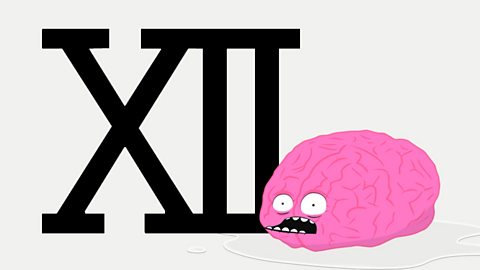NARRATOR: Brain! Time to convert analogue time…
CLOCK: Rock on!
NARRATOR: …into digital time!
DIGITAL CLOCK: Let’s party, yeah!
BRAIN: Brain.
DIGITAL CLOCK: You are strange.
NARRATOR: There are 24 hours in a day and analogue time splits it into two halves.
The first 12 hours of the day, the morning, are called AM. And the last 12 hours of the day, the afternoon and evening are called PM.
Digital time on the other hand, can either use AM, or PM. Or, it can count through the 24 hours of the day.
So seven AM becomes 07:00 hours for example. And when time passes into the PM, digital time carries on counting on.
So one PM becomes 13:00 hours. So to change the time on an analogue clock to a 24 hour digital clock, you just need to add on 12 more hours.
BRAIN: Brain.
NARRATOR: Good lad Brain, rock on!
There are 24 hours in one day, but the day can be measured by splitting it into two halves. The first 12 hours of the day - from midnight to midday - are called AM, and the next twelve hours are called PM.

Roman numerals
The Romans used a different numbering system from the one that we use today. Their numbers were shown by letters.
I = 1, V = 5, X = 10, L = 50 and C = 100
Here are some examples
V is 5, so VI is 5 + 1 or 6.
IV is 4. When the I is before the V it means 1 less than 5.
